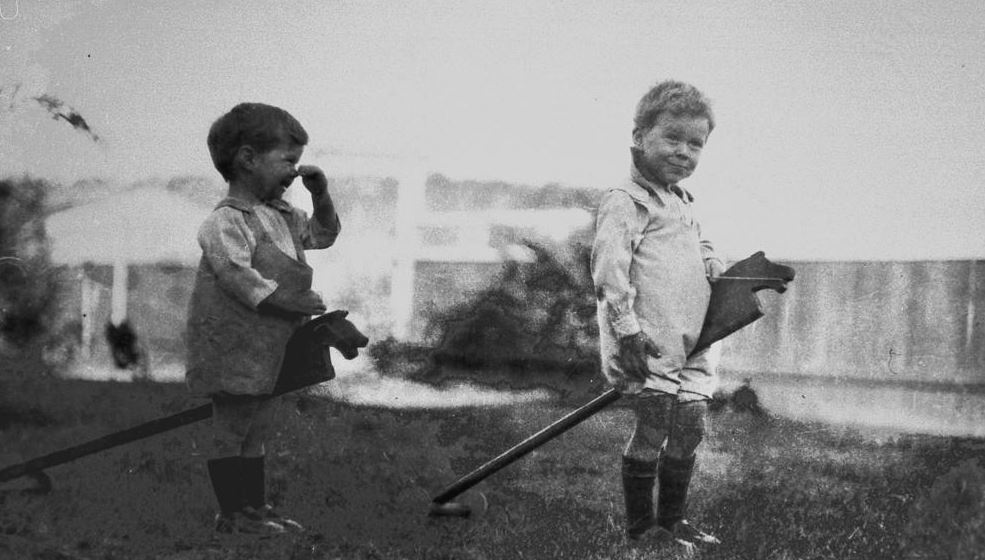J. R. R. Tolkien is one of the most famous authors of the 20th century. Known for the mythical worlds and creatures he presented in The Hobbit and The Lord of the Rings, Tolkien is beloved for his way with words and his imaginative genius.
Tolkien’s fame, lovability, and worldwide influence are the types of things most parents dream of seeing flower and bloom in their own children. Unfortunately, there is no set formula that parents can follow to cultivate children who are successful and impactful like Tolkien. However, parents can glean a number of insights from Tolkien’s upbringing in the hopes of awakening some of the same hidden genius in their own offspring.
Judging from the official biography of Tolkien, there are seven educational practices his mother implemented in the early years of his upbringing. These include:
1. Exploration – Mabel Tolkien would have fit in with parents in the free-range movement of today. She let her little ones roam around outdoors, observing nature and the workings of those around them – even at the hazard of running into rather unsavory characters.
2. Example – Tolkien’s creative genius extended beyond writing and into artistry, as he drew illustrations for the pleasure of his own family and his reading audience. Such artistic talent was likely gleaned by observing his mother, who exhibited a good deal of artistry through her penmanship.
3. Latin – Languages were one of Tolkien’s fortes as a boy. Latin instruction was first and foremost in the language category, but Tolkien also devoted time to studying Greek, French, and others. He also created his own languages.
4. Exposure – While Tolkien may appear the model pupil, his prowess did not extend to every area of study, and music was his Waterloo. While his mother introduced him to piano lessons, she also appears to have had the good sense of recognizing when the venture was unsuccessful. In other words, she gave him the opportunity, but didn’t force the issue when things weren’t working out.
5. Books – Tolkien’s mother saw the value of good reading material and sought to ensure that her son had plenty of it. Among the books he read were Alice in Wonderland, Lang Fairy Books, works by George Macdonald, and various stories about “Red Indian[s].”
6. Encourage Imagination – The stories Tolkien read as a child undoubtedly influenced his later writings, but they also appear to have started him on his own storytelling at a young age. According to his biographer, Tolkien was dreaming up fantastical stories about dragons as early as age seven.
7. Religious Training – Finally, Tolkien’s mother sought to incorporate religious training into Tolkien’s upbringing. This was largely accomplished by making church attendance a high priority, even though the foot trek to church was a long and arduous one for a young boy like Tolkien.
The interesting thing about these seven items is that many of them comprise what Dorothy Sayers, an academic contemporary of Tolkien, labeled as “The Lost Tools of Learning.” We refer to these tools today as “classical education.”
When Sayers wrote “The Lost Tools of Learning” in 1947, she encouraged schools and parents to get back to employing “observation and memory” in a child’s education; to fill a child’s mind “with stories of every kind – classical myth, European legend, and so forth;” to teach Latin, which was “the best grounding for education;” and to introduce children to “the story of God and Man in outline,” including “the Creed, the Lord’s Prayer, and the Ten Commandments.”
Unfortunately, many of these “Lost Tools of Learning” are even more lost than they were when Sayers sounded the alarm. Is it time we seek them out more earnestly, striving to inculcate them in our children like Tolkien’s mother did for him? And is it possible we would see more talented thinkers like Tolkien coming into adulthood if more schools and parents sought to implement the components of his education in the lives of their own children?
—
Dear Readers,
Big Tech is suppressing our reach, refusing to let us advertise and squelching our ability to serve up a steady diet of truth and ideas. Help us fight back by becoming a member for just $5 a month and then join the discussion on Parler @CharlemagneInstitute and Gab @CharlemagneInstitute!
Image Credit:
State Library of Queensland
















Leave a Comment
Your email address will not be published. Required fields are marked with *